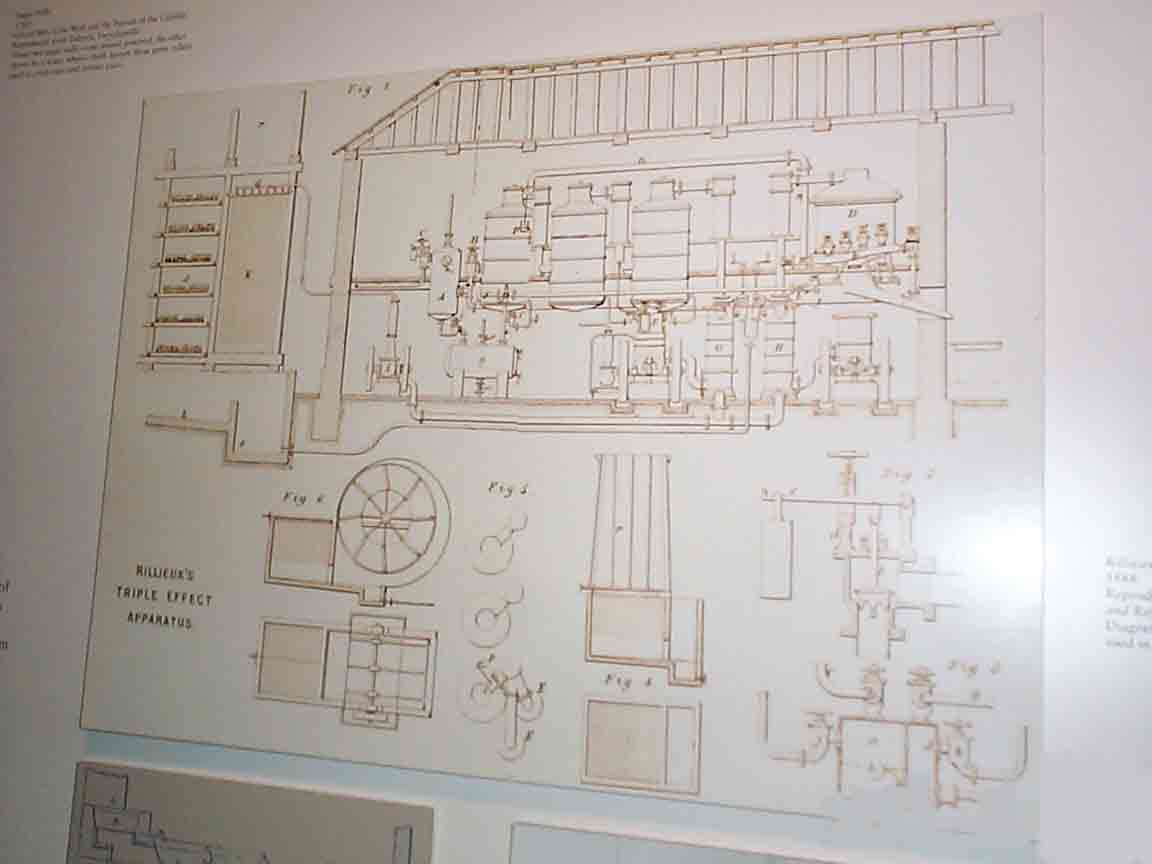 Norbert Rillieux
Norbert Rillieux
"Free Man of Color" |
As the
story goes, a closely guarded secret of the Rillieux family-a secret kept
until now- was that Vincent Rillieux's other son, also called Vincent, had
a liaison with a woman of color called Constance Vivant. Vivant belonged
to the Cheval family, free blacks who had extensive holdings in land and
rental properties. She had several children with Vincent Rillieux, Jr. One
of their sons, Norbert Rillieux, became a leading chemical engineer of his
time, whose inventions revolutionized the sugar industry throughout the
world. Another son, Edmond, was a prominent builder and businessman
who served for a time as superintendent of the city water works.
Birth record in the municipal
archives reads: "Norbert Rillieux, quadroon libre, natural son of Vincent
Rillieux and Constance Vivant. Born March 17, 1806. Baptized in St. Louis
Cathedral by Pere Antoine." Norbert and his mother belonged to the
large caste of " free people of color" - intermediate in rights
and for the most part skin color between slaves and whites - that made New
Orleans unlike any other city in the South. The free quadroon and octoroon
women - so fascinating to New Orleans writers from George Washington Cable
to William Faulkner - were in many ways dependant on white protectors for
support.
As was
Norbert Rillieux, at an early age. His father, Vincent, a wealthy engineer
and inventor (and Edgar Degas's great-uncle), had designed a successful steam-operated
press for making bales of cotton; it was installed in a cotton warehouse on
Poydras Street. Norbert also showed an unusual aptitude for engineering. By
1830, at the age of twenty-four, the precocious Norbert was an instructor
in applied mechanics at the Ecole Centrale in Paris, publishing a series of
highly regarded papers on steam engines and steam power.
Some
time around 1831, Norbert Rillieux made an extraordinary discovery, one that
transformed the sugar-refining process and contributed significantly to the
sugar boom in Louisiana. Traditionally, sugar cane juice was reduced by a
primitive and wasteful procedure called "Jamaica Train," which required
the tedious and backbreaking toil of many slaves, who, armed with long ladles,
skimmed the boiling juice from one open, steaming kettle to the next.
Various attempts had been made,
with vacuum pans and horizontal coils, to harness the energy of the hot vapors
rising from the boiling juice. "It remained for Rillieux," as the
sugar expert George P. Meade noted, "by a stroke of genius, to enclose
the condensing coils in a vacuum chamber that lowered the boiling point of
the liquid and to employ the vapor from this first condensing chamber for
evaporating the juice in a second chamber under higher vacuum." Rillieux
cost-cutting innovation, comparable in its impact on the sugar industry to
Eli Whitney's cotton gin, was the basis for all modern industrial evaporation.
The sugar produced by the vacuum chamber process was superior to that obtained
from open kettles.
Norbert
Rillieux died when he was eighty-nine, and was buried in the cemetery of Pere
La Chaise, with the inscription "Ici reposent Norbert Rellieux ingenieur
civil ne a la Nouvelle Orleans 18 Mars 1806/decede a Paris le 8 Octobre 1894/Emily
Cuckow, Veuve Rillieux 1827-1912." Of his widow nothing is known, except
that Rillieux left her enough money to live comfortably in the province of
La Manche during her final years.

"Blue prints of Norbert Rillieux's
sugar machine" |
Taken from:
"Degas in New Orleans"
Author: Christopher Benfey

